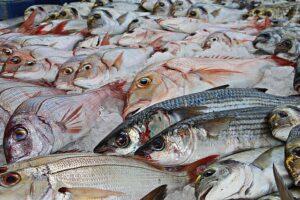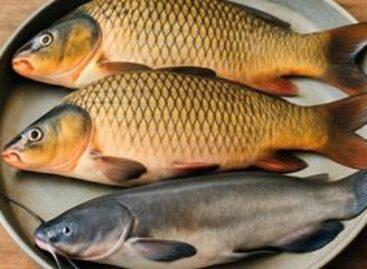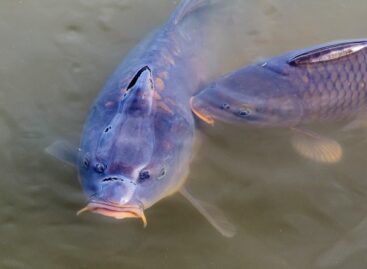Record year for fish farms – but we still eat too little fish
The year 2024 was an outstanding success for Hungarian fish production: according to data from the Institute of Agricultural Economics (AKI), more than 22,800 tons of fish were produced in our country’s pond farms, which represents an increase of more than 16% compared to the previous year. This is the best result in the past five years and a clear sign that domestic fish farms are moving in the right direction, according to the latest report by AKI, which was pointed out by the Agrárszektor.hu.
Carp continues to dominate
 Carp continues to be the backbone of domestic fish production: in 2024, this species accounted for nearly 80% of fish for food. Total carp production increased to 11,900 tons, approaching the level of the record year of 2020. The largest amount of fish came from three regions: the Northern Great Plain, Southern Transdanubia and Southern Great Plain, which are traditionally strong in fish farming and have excellent natural resources.
Carp continues to be the backbone of domestic fish production: in 2024, this species accounted for nearly 80% of fish for food. Total carp production increased to 11,900 tons, approaching the level of the record year of 2020. The largest amount of fish came from three regions: the Northern Great Plain, Southern Transdanubia and Southern Great Plain, which are traditionally strong in fish farming and have excellent natural resources.
Drought and heat wave: unnatural challenges
Although the numbers are encouraging, the unfavorable weather posed a serious challenge for producers. 2024 was one of the warmest years in our country, for example, in February the average temperature was +7 °C higher than usual for this time of year. In addition, the amount of precipitation was also extremely low: we experienced the 25th driest year in the past 124 years. Water replenishment therefore became crucial – more than 270 million cubic meters of water were used to maintain fish ponds, 14% more than the previous year.
Record in feeding too
In addition to natural food, fish farmers are also using more and more mixed feed. In 2024, more than 58,000 tonnes of these nutrients were fed, a new record. The aim is to achieve faster growth and better quality – especially in the case of carp, which is particularly prized for its taste and texture.
Predators and violations threaten production
Damage caused by animals is also a growing problem: cormorants, herons, otters and beavers regularly injure or kill fish, especially juveniles. Meanwhile, the unauthorized introduction of non-native fish species into ponds is also a serious threat: in the past three years, fines have had to be imposed in 16 cases. Although the introduction of certain non-native species is permitted, this can only be done in closed, non-flowing waters.
Related news
Egg prices up nearly one-third
🎧 Hallgasd a cikket: Lejátszás Szünet Folytatás Leállítás Nyelv: Auto…
Read more >Tradition and health on the holiday table – at least let’s eat fish at Christmas!
🎧 Hallgasd a cikket: Lejátszás Szünet Folytatás Leállítás Nyelv: Auto…
Read more >There will be no shortage of high-quality Hungarian fish, according to professional organizations
🎧 Hallgasd a cikket: Lejátszás Szünet Folytatás Leállítás Nyelv: Auto…
Read more >Related news
How do young adults celebrate?
🎧 Hallgasd a cikket: Lejátszás Szünet Folytatás Leállítás Nyelv: Auto…
Read more >Vajda-Papír celebrates Ooops!’s 15th anniversary with a hybrid AI campaign
🎧 Hallgasd a cikket: Lejátszás Szünet Folytatás Leállítás Nyelv: Auto…
Read more >Pre-holiday shopping at up to half price
🎧 Hallgasd a cikket: Lejátszás Szünet Folytatás Leállítás Nyelv: Auto…
Read more >






